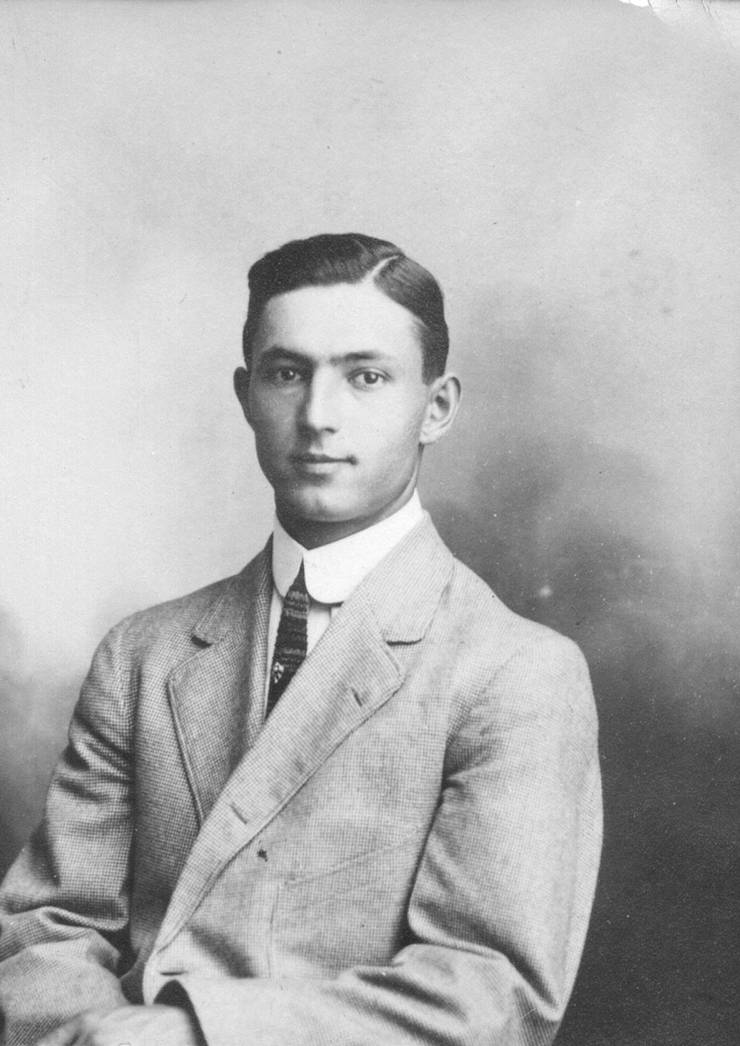
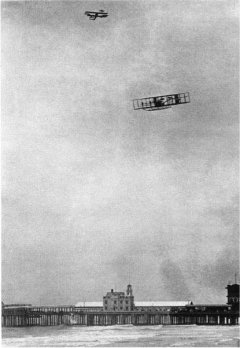
9 July 1910: Walter Richard Brookins flew his Wright Flyer to an altitude of 6,175 feet (1,882 meters) at the Atlantic City Aero Meet at Atlantic City, New Jersey, becoming the first pilot to fly higher than one mile. He broke his own altitude record of 4,380 feet (1,335 meters) set at Indianapolis, Indiana, less than a month earlier.
Brookins took off in a Wright Model A at 6:07:30 p.m. The ascent took just over 56 minutes as he made a gradual climb in 2-mile circles. The altitude was recorded by a Richard Frères recording aneroid barometer (or barograph), serial number 48188, which had a measurement range of 0–5,000 meters (0–16,404 feet). The descent from the record altitude took approximately seven minutes, as Brookins circled in a steeply-banked spiral and landed at 7:11 p.m.
In addition to the barograph carried aboard the Wright Flyer, a team of engineers and surveyors from the civil engineering firm of Ashmead & Hackney of Atlantic City measured the height of Brookins’ airplane bt rriabulation, using transits set up approximately 2½ ¹ miles (4 kilometers) apart. At 7:03:55 p.m., Brookins’ crossed the surveyors’ base line.
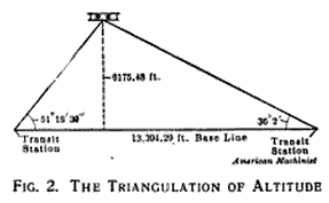
The engineering team reported:
“Gentlemen, —We beg leave to report that we have determined the height of the undersides of the runners of the Wright biplane occupied by Mr. Walter R. Brookins at the time of crossing the established base line between the two instrument stations (7h. 03m. 55s. p.m., July 9th, 1910) to have been 6,175 ft. (nearest even ft.) above sea-level.”
— Flight, No. 86 (Vol. II, No. 34.), 20 August 1910, at Page 677, Column 2
Brookins was awarded a prize of $5,000.00 offered by the Atlantic City Aero Club.
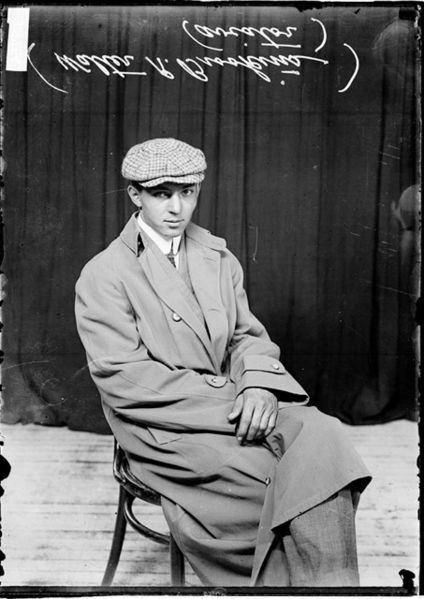
A contemporary newspaper reported the event:
BROOKINS BREAKS ALTITUDE RECORD
Atlantic City, July 9.—Walter Brookins, in a Wright biplane, broke the world’s altitude record here this evening, when he attained a height of 6,175 feet. He used his last drop of gasoline at his highest altitude and was still climbing when his engine missed explosions. The daring aviator brought his machine back to level to get the last drop of fuel out of the storage tank to reach the line of vision of engineers on the beach. Reaching the imaginary line, Brookins started to glide to earth and his engine stopped entirely when he was at 5,600 feet and still over the ocean. His circling glide to the beach which the crown believed to be a bit of fancy flying was done to save himself from diving into the sea.
Brookins was ready to collapse when he reached the ground and did not tell of his plight in the air until midnight, after he had partly recovered.
Officials at midnight gave 6,175 feet as the exact height of the flight from calculations of engineering experts. The barograph record is 6,200 feet, leaving but 25 feet difference. It is expected that the record will stand without protest.
Wins $5,000 Prize.
By his feat today Brookins wins the $5,000 prize offered by the Atlantic City Aero Club for breaking the world’s record, unless a higher altitude is reached here before the end of the present meet.
Brookins spent one hour, two minutes, 35 15-100 seconds in the air, according to the official timing of Chairman Henry M. Neely and Recorder Augustus Post, of the Contest Committee of the National Council of the Aero Club of America. About 57 minutes of this time was made in a circling ascent, the rush of over a mile to the ground consuming less than seven minutes.
Fear that Brookins at his highest point had not crossed the line of vision of the expert engineers in charge of securing his height by triangulation startled officials and spectators until it was discovered that the failure to secure a record of his crossing the imaginary line on which his record will be based was on two swings at a much lower altitude than at the final highest point.
Makes Final Start at 6.08 P. M.
Brookins, after waiting all day for the brisk southerly wind to die out, made a practice spin of a little over 15 minutes, reaching an altitude of 1,900 feet. His final start was made at 6.08 o’clock p. m., with the weather absolutely clear and much of the force of the wind gone in the lower altitudes.
His rise was made from alongside one of the ocean piers, He pointed his machine to the west and then swung out over the ocean, where he started his spiral flight over the ocean and city.
News that Brookins was really attempting to break the altitude record reached hotels and city people, and when he reached a height of 1,520 feet the greater part of the city was on the beach. It is calculated that nearly 100,000 people watched the flight and cheered Brookins when he descended at 7.11 p. m.
Men and women in the great throng threw up hats and handkerchiefs and the police had trouble keeping back the crown until Brookins made a run from his machine to his dressing room on the pier.
Waves Roses to Cheering Crowd.
Miss Eva Goffyn, sister of Frank Goffyn, Brookins’ fellow aviator, pushed a bunch of roses into his hands which he waved to the cheering crowd as he mounted to the deck of the pier.
Brookins declined to receive callers and rested for 10 minutes before he left for his hotel in an automobile. He again went into seclusion, after stating that he found the air currents steady at his highest altitude and that he turned toward the earth when his aneroid barometers showed an altitude of over 6,000 feet.
Glenn Curtiss made several short flights while Brookins was preparing to ascend for his final trial, but descended without attempting any altitude flight over the 50-mile course which he expects to cover tomorrow.
—THE READING EAGLE, Vol. 43, No. 164 Sunday 10 July, Page 1 at Column 3
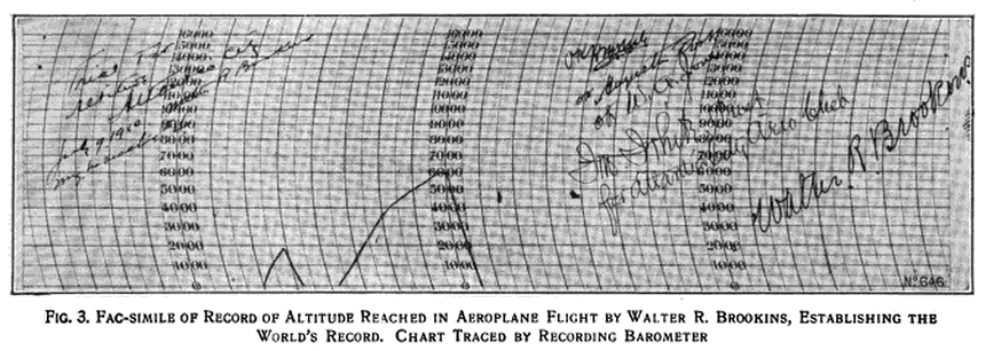
The Wright Model A, produced from 1907 to 1909, was the world’s first series production airplane. It was slightly larger and heavier than the Wright Flyer III which had preceded it. It was a two-place, single-engine canard biplane built of a wooden framework braced with wires and covered with muslin fabric. A new system of flight controls allowed the pilot to sit upright rather than lying prone on the lower wing.
The dual horizontal elevators were placed forward and the dual vertical rudders aft. The biplane was 31 feet (9.449 meters) long with a wingspan of 41 feet (12.497 meters). The wings had a chord of 6.6 feet, and vertical separation of 6 feet. The airplane had an empty weight of approximately 800 pounds (363 kilograms).
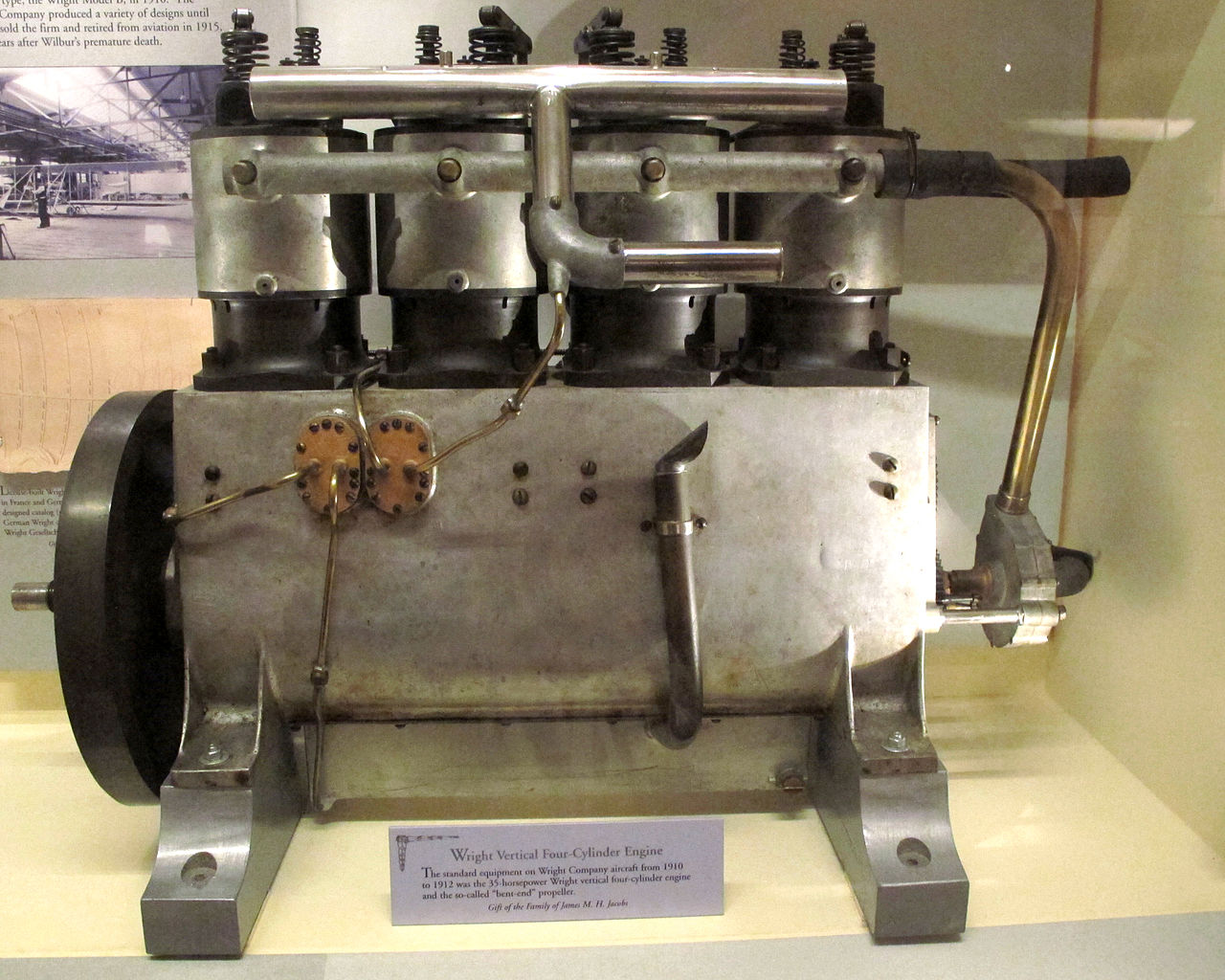
The Model A was powered by a single water-cooled, fuel-injected, 240.528 cubic-inch-displacement (3.942 liter) Wright vertical overhead-valve inline four-cylinder gasoline engine with 2 valves per cylinder and a compression ratio of 4.165:1. It produced 32 horsepower at 1,310 r.p.m. During three years of production (1908–1911) Wright “4-40” engines were built that operated from 1,3525 to 1,500 r.p.m. Power output ranged from 28 to 40 horsepower. These engines weighed from 160 to 180 pounds (72.6–81.6 kilograms).
Two 8½ foot (2.591 meters) diameter, two-bladed, counter-rotating propellers, driven by a chain drive, are mounted behind the wings in pusher configuration. They turned 445 r.p.m.
The Wright Model A could fly 37 miles per hour (kilometers per hour).
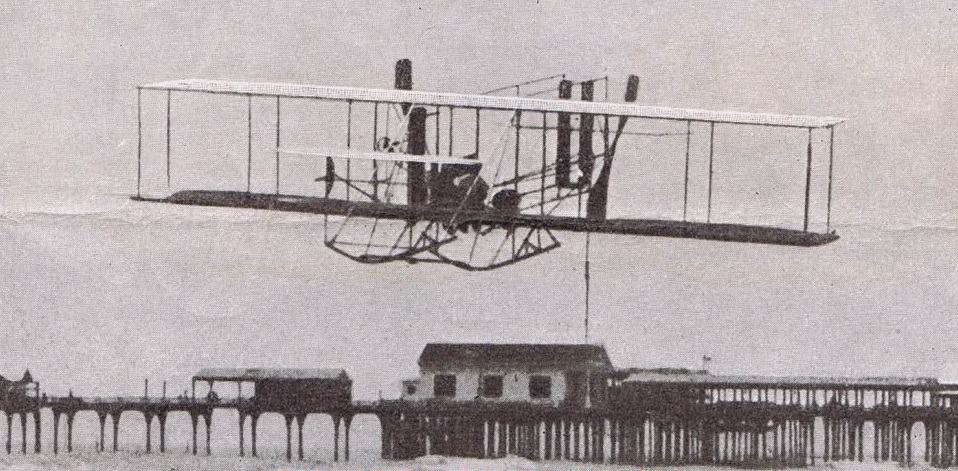
Walter Richard Brookins was born at Dayton, Ohio, 17 July 1888. He was the second of four children of Noah Holsapple Brookins, a salesman, and Clara Belle Spitler Brookins.
Brookins, then working as a chauffeur, married Miss Grace M. Miller, a governess, on 7 February 1907, in Hamilton County, Ohio. They divorced 18 May 1911, in Cincinnati, Ohio. (An earlier divorce decree, issued in Dayton in 1910, was set aside.)
Walter Richard Brookins was the first civilian pilot trained by Orville Wright. He was in a group of five pilots trained for the Wright Brothers’ Exhibition Team at their training camp at what is now Maxwell Air Force Base, Montgomery, Alabama.
Brookins was then hired as an instructor and finished training the last two men in the group. He was given a two-year contract with a salary of $20.00 per week, plus $50.00 per day for each flying day. Any prize money won—such as the $5,000 prize at Atlantic City—was turned over to the company.
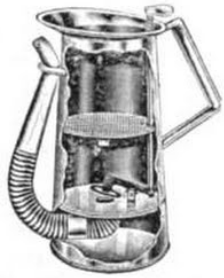
From May 1919, Brookins, with his brother Earl, owned and operated the Brookins Manufacturing Company, Inc., in Dayton, which produced their invention, the All-In-One Liquid Measure. The first version was patented in 1924, and improvements followed.
Brookins married Mary Lamke, a secretary at McCook Field, Dayton, 12 April 1921. She held the position of corporate treasurer for the company. They remained together until his death.
In 1930, Brookins was self-employed in the financial industry. He and Mary relocated to California, living in Beverly Hills.
Brookins partnered with David R. Davis ² to form Brookins-Davis Aircraft Corporation, Los Angeles. In 1931 the company had applied for a patent for an airfoil profile designed by Davis, and which would become known as the “Davis Wing.” The patent was issued 1934. Mrs. Brookins had known Major Reuben Hollis Fleet at McCook Field. (Fleet was the founder and president of the Consolidated Aircraft Corporation.) This led to meetings between Brookins, Davis and Fleet which resulted in the airfoil being licensed to Consolidated. It was used on the B-24 Liberator and B-32 Dominator heavy bombers.
Walter Richard Brookins died at Los Angeles, California, on 29 April 1953. His ashes were interred at the Portal of the Folded Wings, Valhalla Memorial, North Hollywood, California, 17 December 1953.
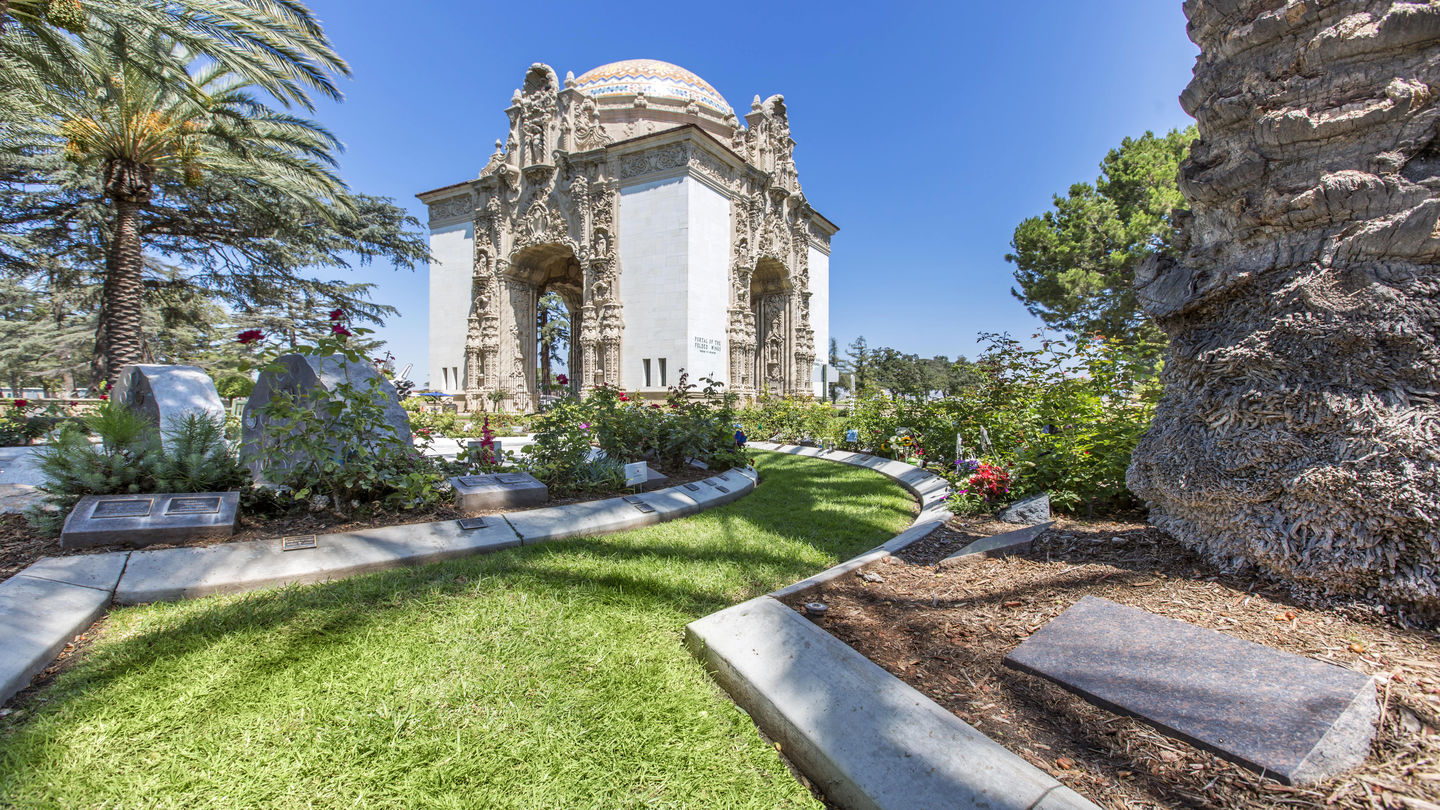
¹ The actual length of the base line was 13,394.29 feet (4,082.58 meters). Brookins’ trangulated altitude was 6,175.48 feet (1,882.29 meters).
² Davis had previously co-founded the Davis-Douglas Company, which would become the Douglas Aircraft Company.
© 2018, Bryan R. Swopes